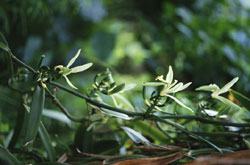Fraxinus populations in focus
Planting and managing woodlands for conservation and environmental benefits has raised numerous questions about source seed selection. The enrichment and restoration of existing forests by means of natural regeneration require trees with good reproductive vigour, ability to compete with other species and adaptive capability to future environments. Nonetheless, local genotypes are assumed to be well adapted to local conditions. As a consequence, limited scientific basis exists for the selection of non local planting material genetically appropriate for the maintenance of diversity and sustainability. The FRAXIGEN project focused on principal European Fraxinus populations and aimed to provide a set of scientifically-based guidelines for anthropogenic selection of sustainable ash genetic resources. For this purpose, researchers at Oxford Forestry Institute investigated genetic diversity in autochthonous populations of ash, as well as forces shaping this diversity. These studies included reproductive biology, mating system and gene flow in Fraxinus. To estimate genetic diversity within populations and the extent of differentiation between them, a set of laboratory-based genetic studies complemented a series of field trials within semi-natural woodland. Phenological observations and controlled pollination experiments looked into each species' potential for self-fertilization, in addition to the potential of different genders as pollen and seed parents. The findings were translated into scientifically based recommendations for sourcing of ash seed for the three species under study (F. excelsior, F. angustifolia, F. ornus). Seed collection requires a broad genetic base to ensure trees will be able to produce seeds in the short-term and adapt to changing environments in the future. The most important aspects identified for maximum genetic diversity are the number of trees collected from, spacing between them and the amount of seeds collected. High levels of gene flow and broad adaptability within the European Fraxinus species stressed broad seed source and the collection increased distances between seed trees. The recommendations drawn for long-term conservation of these species in Europe are envisaged to provide guidance on forest management for governments, the private sector as well as public interest groups.



